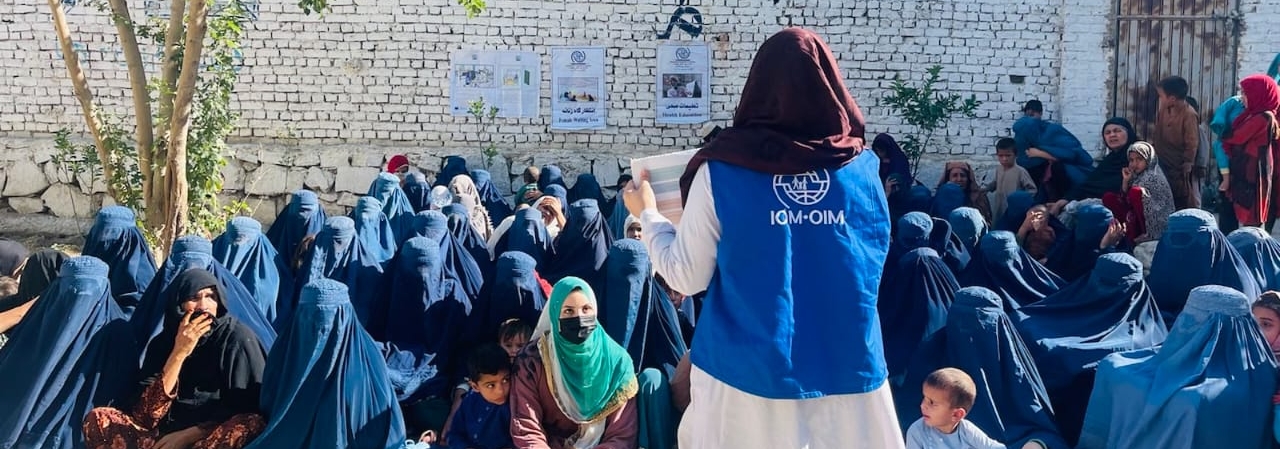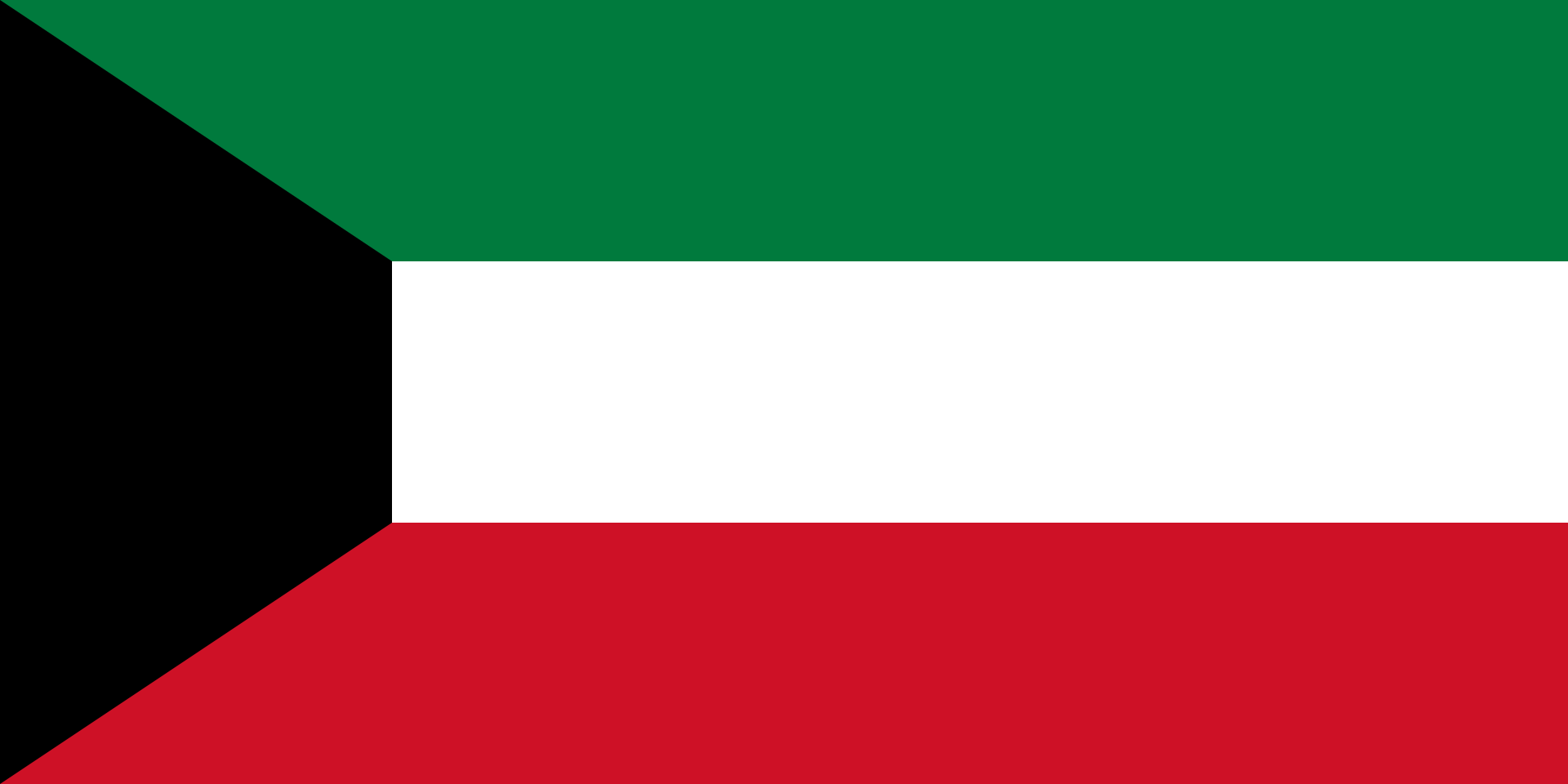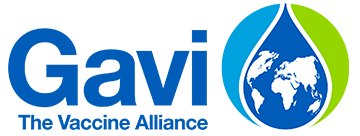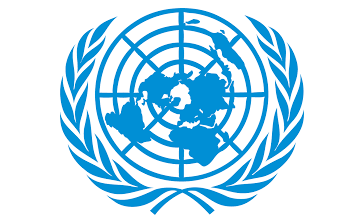IOM Vision
IOM’s strategic approach in Afghanistan will continue prioritizing life-saving multi-sectorial humanitarian and protection assistance across the country and in targeted border crossing points, while laying the foundation for durable solutions for return, recovery, and longer-term development efforts. IOM will prioritize gender-responsive programming, through gender analysis and interventions that focus on the inclusion and empowerment of women and girls.
Objective
Saving lives and protecting people on the move
IOM aims to deliver timely and effective multi-sectorial life-saving humanitarian assistance and protection to people on the move and affected populations in coordination with the humanitarian country team and partners on the ground. The sectors of interventions include Shelter and Non-Food Items, Health, Protection including Cross-Border (CB) and Post-Arrival Assistance (PARA), Water, Sanitation and Hygiene (WASH). IOM will also continue to provide life-saving humanitarian assistance to disasters affected populations as well as provide winterization assistance to displaced populations and vulnerable communities in affected areas.
As Emergency Shelter and Non-Food Items Cluster Co-Chair, IOM primarily responds to the victims of natural hazards while UNHCR covers conflict related displacement. However, due to the scale of displacement in recent months and limited stock capacity, IOM is also assessing and responding to conflict displacement, with needs continuing to mount.
- The compounding effects of conflict, drought, and winter will require strengthened coordination. IOM’s warehousing capacity across the country will be maintained and strengthened where needed, secure and possible.
- Starting from October, cash for winterization is a priority to enable people to secure heating, clothing and shelter that will keep them sufficiently warm during the harsh cold months.
- In light of the recent developments and on the basis of recent post distribution monitoring findings, IOM will also expand its cash-based interventions through cash for NFIs, cash for rent and cash for shelter repair.
All distributions will take into account the local context, the ES/NFI Cluster standards, and the specific needs and vulnerabilities of beneficiaries especially women and girls, mainstreaming protection concerns and gender considerations, and will have COVID-19 mitigation measures in place.
The ES/NFI Cluster is critical to ensuring timely responses, coordination, and cost-effectiveness in Afghanistan.
- Continuing the ES/NFI cluster coordination in the country will be necessary to allow appropriate and effective coordination with all UN Agencies, international and national NGOs, and local partners, appropriate advocacy on behalf of the affected population as well as produce relevant sector products such as 5Ws, 4Ws, situation reports, maps and response dashboards. IOM will continue to co-lead the Emergency Shelter and NFI Cluster, which also currently covers Camp Coordination and Camp Management (CCCM), and to preposition, rapidly assess needs and respond with emergency shelter and non-food items wherever there is a need across all 34 provinces.
Health has been identified as a key priority by all humanitarian actors, including access to lifesaving primary and secondary health care services, and mental health and psychosocial support services (MHPSS), and especially in view of the withdrawal of World Bank managed funding of the health system. Weak health systems and disrupted access to health care have left millions of Afghans with mounting health needs in the face of the COVID-19 pandemic. With the third wave of COVID-19 infections across the country and severely disrupted supply of essential medicines, medical supplies and nutritional supplements, health response is an urgent need. Provision of reproductive, maternal, child and adolescent health will be of critical importance with potential significant disruption of access to and provision of health services for women and girls. In order to respond to the increasing health needs of IDPs and other mobile populations, working in close coordination with the health cluster and partners, IOM will sustain and strengthen delivery of essential health care to serve both IDPs and vulnerable returnees, as well as vulnerable members of the surrounding communities, including:
- Mobile health teams providing a comprehensive range of health services inclusive of primary healthcare consultations, emergency stabilization of critical cases, emergency reproductive, maternal, child and neonatal health care (see: MISP), MHPSS services, vaccinations (routine/EPI, alongside COVID-19 and outbreak) supporting the COVID-19 response, referrals for specialized cases and dispensing of free medicines and critical health supplies, including hygiene and menstrual hygiene management kits.
- Targeted health promotion activities and risk communication activities, adapted to the epidemiological situation.
- Supporting COVID-19 national vaccination roll-out through mass vaccination programming, logistical or operational support (e.g. non-cold-chain transport) secondment of staff, and/or management of any vaccine derived adverse effects through IOM’s RRTs and MHTs, alongside facilitating demand generation activities to support COVID-19 vaccine education, and enhance up-take
- Facilitate tuberculosis (TB) programming through active case finding in hard-to-reach communities, testing and enrolment in treatment.
IOM Afghanistan works on the integration of protection mechanisms and support undocumented returnees with specific needs to return and reintegrate in safety and dignity. This is carried out through the provision of tailored assistance at border points and in provinces of return. IOM Protection intervention encompasses post-arrival protection assistance; sustained case management support in areas of return; and protection monitoring, documentation, reporting, and advocacy. These efforts complement and support broader durable solutions planning for IDPs and returnees in Afghanistan.
- IOM will expand the current protection case management and protection monitoring programme to support IDPs as well as returnees. Protection screeners at Herat and Nimroz border points will identify persons with specific needs (including women /children at risk, serious medical cases, persons with disabilities), and refer cases facing protection risks for post-arrival assistance – e.g. provision of information, referrals, and assistance including family tracing and reunification, emergency accommodation, and safe transportation to returnees’ chosen final destination.
- In addition, IOM will continue to conduct protection case management for undocumented returnees and IDPs households with persons with specific needs. Particularly, households will continue to be supported via dissemination of key protection information, referral to local services including livelihood opportunities, and one-off assistance such as cash for protection to meet immediate needs and mitigate protection risks (e.g. resort to negative coping mechanisms such as begging, child labour, or child marriage). Regular protection monitoring (surveys, interviews and community discussions) will continue to be undertaken in coordination with the Afghanistan Protection Cluster to understand the protectionn environment for undocumented returnees.
Monitoring will take place across all locations to track protection trends, monitor human rights violations, and support analysis to inform evidence-based advocacy for an effective protection and wider humanitarian response across Afghanistan. They will also support protection mainstreaming, including protection against sexual exploitation and abuse, across all units of IOM.
Access to safe water continues to be most critical, particularly in the context of the severe water scarcity affecting most of the country. IOM’s WASH unit will include both technical and public health expertise to ensure timely and appropriate WASH response and services where needed across the country, prioritizing activities that will mitigate the risk of transmittable disease outbreaks, including COVID-19 and acute watery diarrheal (AWD) diseases working in close cooperation with IOM Afghanistan's health teams.
This includes:
- Assessment, rehabilitation and expansion of water schemes;
- Management of water schemes through the creation of gender-balanced community-led WASH committees;
- Hygiene promotion and awareness raising activities, focus on risk mitigation measures for transmittable diseases, including COVID-19 and AWD/cholera;
- Provision of basic hygiene kits inclusive of menstrual hygiene management (MHM) items.
Specific emphasis is needed on expanding site management (CCCM) coordination and operations capacity in the new displacement context, given the expansion of displacement sites and anticipated continuation of population movements. This will include:
- Coordination and operations capacity, such as site managers and emergency site improvements where needed
- Site improvement and Water, Sanitation and Hygiene (WASH) in informal settlements and collective centres. Activities will be done in coordination with WASH actors to ensure minimal standards are met to save lives and manage COVID-19 in displacement sites. IOM, alongside UNHCR, is working to ensure a coordinated response to managing displaced communities.

Objective
Driving solutions to displacement
IOM uses an adaptive process, responsive to people on the move, that is relevant to displacement affected communities in Afghanistan, through a durable solutions approach, to support authorities and societies for inclusive integration and sustainable localized recovery planning. IOM’s programming aims to enhance the resilience of individuals and communities through addressing the socioeconomic needs of returnees, IDPs, and vulnerable host populations in high-return provinces.
IOM will accelerate delivery social cohesion and peacebuilding programming across 150 displacement and conflict-affected communities. This will include:
- Provide MHPSS , including awareness raising on mental and psychosocial health, training community volunteers in psychosocial first aid, and establishing community-based support and referral structures to build capacity for community level response that strengthens social cohesion and resilience.
- Support capacity at community level on social cohesion and resilience through integrated MHPSS activities that including social, ritual and recreational activities that promote relationship-building, trust and problem solving; creation of intercommunal livelihood activities; establish intercommunity group sessions and dialogue sessions to prevent violence and analyse potential conflict.
- Provide capacity building to the selected communities on basic conflict mediation skills to expand their capacity to address interpersonal-relationship challenges and community-based conflict related issues.
- Partner with implementation partners that are connected to the area-based approach, and focus on addressing collective trauma, and promoting social cohesion through activities such as facilitating community dialogues, assessing and strengthening informal conflict resolution mechanisms and promoting community-led cultural events.
In line with the Strategic Framework for Solutions to Internal Displacement in Afghanistan (2023 – 2024), IOM aims to lay down the foundations to sustainable solutions to internal displacement through three main pathways (voluntary return, local integration, or resettlement elsewhere), using area- and neighbourhood-based approaches and synergizing recovery initiatives and crisis prevention among humanitarian, development, and peace nexus (HDPN) actors. IOM recovery and transition interventions aim at addressing basic needs, while at the same time supporting individual resilience and community stabilization by promoting community infrastructure projects, economic revitalization and sustainable livelihoods, especially for women, access to essential basic services, including health and social services, community cohesion.
IOM will accelerate delivery of area-based humanitarian, early recovery, reintegration and resilience projects across 150 displacement and conflict-affected communities. This will include:
- Develop District/Provincial Profiles to guide evidence-based strategic and essential infrastructure projects, to provide communities with basic services while building community resilience to withstand shocks, including those related to climate change and urbanization.
- Undertake participatory community development and action planning to increase civic engagement, strengthen local ownership and identify context-specific solutions for addressing the vulnerabilities of different social groups.
- Support active collaboration and exchange among local stakeholders and community members, particularly vulnerable, marginalised and oppressed groups, to enhance social cohesion and strengthen communities’ response capacities to shocks and stresses.
- Provide emergency livelihood assistance in target communities, including through cash-for-work on construction sites, asset replacement and emergency business grants in support of economic recovery.
- Undertake community-based monitoring and evaluation to promote legitimacy and accountability at local level.
- Where possible and appropriate, referrals of vulnerable individuals from IOM’s cross-border programmes, in particular protection, will be provided support upon their return to areas where stabilization or durable solutions activities are ongoing.
In the same 150 communities targeted with area-based responses for community stabilization, activities supporting durable solutions will also be delivered. This includes:
- Implementing activities that benefit both displaced or returned and host community, while being responsive to the specific (re)integration needs of people on the move, including IDPs, returnees, refugees and rural-urban migrants.
- Implementing activities that aim at reducing the root causes of displacement and migration, by strengthening social, economic and psychosocial resilience of displacement affected communities, considering vulnerabilities specific to gender, age, and ability, among others.
- Revitalising local economic conditions by supporting the business eco-system and increasing human capital, thereby safeguarding existing jobs and creating new ones. • (Re)constructing productive and basic social service infrastructure, including health clinics and schools.
- Engaging with diaspora communities to foster ongoing linkages and exchange of knowledge, skills, resources and support, connecting groups of Afghans across the world with each other.
Objective
Strengthen preparedness and reduce disaster risk
Aligning with the Sendai Framework, IOM Afghanistan works towards preventing the worst impacts on vulnerable populations living in disaster-prone areas through: small-scale disaster risk management (DRM) infrastructures (such as gabion walls or irrigation systems); implementing Community-Based Disaster Risk Management (CBDRM) through the development of Community Disaster Management Action Plans, community hazard maps and early warning systems.
IOM Afghanistan will primarily target local communities, to enhance the resilience and preparedness of communities at risk of natural disasters in Afghanistan. These communities will directly benefit form the intervention in different areas such as early warning systems, community-based disaster risk management, and capacity building. NGOs and implementing partners working in the field of disaster management and humanitarian assistance will also be supported. Finally, attention will be given to vulnerable and marginalized groups within Afghan society, such as women, children, elderly individuals, and people with disabilities.
As part of preparedness efforts in communities that face a high-risk of disaster and displacement, IOM supports hazard and vulnerability analysis, community-based disaster risk management, livelihoods' diversification strategies and the set-up of community early warning and preparedness systems to mitigate risk and enable a more effective response
- Aligning with the Sendai Framework, IOM will work towards preventing the worst impacts on vulnerable populations living in disaster-prone areas through:
- Constructing 25 small-scale disaster risk management (DRM) infrastructures (such as gabion walls or irrigation systems) in 10 Provinces
- Implementing Community-Based Disaster Risk Management (CBDRM) in 40 communities across 10 Provinces. With women, men, boys and girls involved, communities will build and be equipped for Community Disaster Management Action Plans, community hazard maps and early warning systems.
- Pilot hazard mapping in three sites
Objective
Contribute to an evidence-based and efficient crisis response system
IOM interventions are founded on evidence-based data collected through the IOM Displacement Tracking Matrix (DTM) and partners and implemented through a participatory approach involving the affected populations in all steps of program cycles to overall promote a needs-based and inclusive response.
Through its DTM, IOM regularly tracks and monitors cross-border and in country population mobility, as well as trends, vulnerabilities and needs associated to it, to inform the humanitarian response on the ground.
- AMNA (Afghanistan Mobility and Needs Assessment) assess population mobility trends and determine numbers and locations of displaced and vulnerable population, reasons for displacement, as well as needs and gaps in access to services and facilities. (It was previously called the Baseline Mobility and Community Based needs Assessments, or BMA and CBNA.)
- Flow Monitoring at four major border crossing points, counting the number of movements daily as well as provinces or origin, countries of destination, and reasons for movement.
- Rapid assessments will be conducted in locations affected by instances of displacement or disaster immediately after such an incident has occurred in order to assess needs and impact. In cases of eviction, as there is sometimes knowledge in advance that one will take place, DTM will conduct a pre-return assessment.
- IDP Data Harmonization Exercise: This joint IOM-UNHCR Data collection Exercise will produce harmonized IDP and IDP returnee figures endorsed by all stakeholders.
- Post-return Monitoring: DTM has been Monitoring the return of families in Badghis province after a UNHCR-led pilot initiative which facilitated the return of these families. DTM surveys the families to monitor perceptions, Needs, and intentions in order to measure the durability of return and learn for future projects.
Afghanistan
The map used here is for illustration purposes only. Names and boundaries do not imply official endorsement or acceptance by IOM.
Figures are as of 31 December 2023. For more details of IOM's operational capacity in country, please see the IOM Capacity section.
























